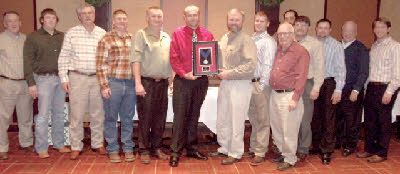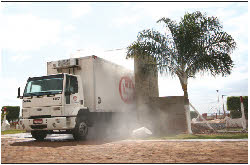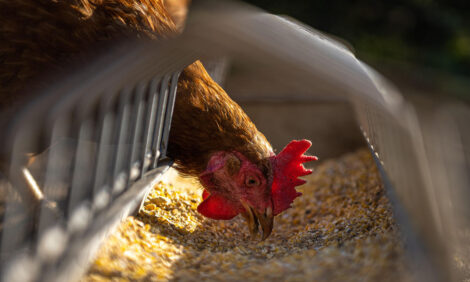



Preparing for the Inevitable with Reassurances in Place
The latest status of the international process to establish poultry ‘compartments’ is explained by Dr Kate Barger, veterinary groups and quality assurance manager/veterinarian at Cobb Europe.When first proposed by the the World Organisation for Animal Health (OIE) some six years ago, the concept of compartmentalisation was designed to provide an additional level of confidence and credential beyond geographical borders or 'zones' traditionally adopted during a notifiable disease outbreak.

With compartmentalisation, industry and governments not only consider the physical boundaries but also the epidemiological factors, including management practices and biosecurity, that help define an effective separation between sub-populations in the event of disease. The concept is aimed at helping with international trade and disease control during an active disease crisis episode in the exporting country.
For trading during a disease crisis, compartmentalisation can help with the movement of commodities where ‘country’ or ‘regional’ disease freedom assurances cannot be authorised. Secondly, for disease control or eradication procedures, progressive compartmentalisation steps in a country may enable a more strategic approach for government risk analysis and disease prevention methods within a geographic area.
While the purported benefits are straightforward for exporting countries, importing countries and suppliers of valuable commodities, implementation has been more challenging.

Qualified Biosecurity Systems
The OIE has clearly provided a framework for compartments but the responsibility lies with individual countries for the specific details required for infrastructure, training of independent government staff to assess and approve sites, and the notification of approved compartments.
In various cases, implementation – Stage 2 – has been a joint effort between industry and government. With the elite poultry breeding industry, exporting companies have a clear understanding of the need to have qualified biosecurity systems to help ensure that trade disruptions are limited in the event of a disease crisis within the country of origin.
For governments, having approved compartments for a defined sub-species may not only improve the quantity and frequency of disease surveillance within the sub-population but should also provide greater transparency and traceability of livestock with regard to biosecurity and epidemiological factors.
Compartment Expectations
To implement compartments, countries have responded in different ways to set up the procedures and assessments for their approved compartments.
Some governments are using the OIE standards as a basic outline for compartmentalisation. By only utilising the OIE standards as the primary framework for their compartments, these governments allow companies to demonstrate the robustness of their biosecurity programmes, epidemiological links and disease surveillance systems to meet the OIE definitions for compartments.
Other governments have additionally provided industry with stringent criteria to eliminate potential areas of self-interpretation or leniency. These strict guidelines include clearly defined checklists for biosecurity and management procedures, expectations for facility infrastructure, surveillance testing and biosecurity measures that go well beyond the basic framework of the OIE criteria.
A final example of Stage 2 implementation is the EU compartment standard that provides benchmark criteria for EU member countries. These EU Standards are more specific and provide additional detail to basic OIE criteria.
Once the national or governmental requirements are known, industries and individual companies can begin to implement Stage 2 by developing actively the documentation and implementing biosecurity measures to meet any additional compartment standards expected by their governments. As companies complete their internal work and achieve compartment recognition by the veterinary authority of the country where their production locations are situated, compartmentalisation can then become a reality.
Establishing operations as compartments elevates the company and the industry to a higher status of biosecurity and health during times of disease occurrence. While the process and implementation is indeed a burden and requires an incredible amount of attention to detail, most companies have found that these requirements have improved the objectives and assessments of their daily management procedures as well as transparency of their biosecurity actions.
The next step for compartmentalisation is Stage 3 and will critically demonstrate the functionality of approved compartments. This phase involves recognition, and in some cases evaluation, of the defined compartment by the importing country. At the recent May 2011 OIE meeting in Paris, a luncheon meeting was attended by approximately 165 OIE delegates to learn more about the UK compartment scheme. Presentations highlighted the UK’s collaborative effort between government and industry to determine the necessary criteria for compartments and the actual implementation and approval of compartments for poultry breeding companies located in Great Britain.


Calm before the Storm
While events like this to promote the compartment process are vital, speakers also stated that importing/exporting governmental discussions about compartments must now take place during the time of disease freedom. This period – essentially the ‘calm before the storm’ – is vital to many exports and to proving that the compartments are sustainable.
To facilitate this phase of understanding between governments for the purpose of international trade, small changes are already taking place. For example, updating export health certificates to include the text ‘compartment’ in statements related to disease freedom is just a portion of the work that needs to be completed.
For the actual recognition and approval of compartments to take place, the exporting government must be transparent with the standards and assessments they have provided to approve the compartment, and also be willing to openly share this information with the importing government.
By sharing this information in advance for recognition of the compartment, the ultimate goal will be to avoid blanket country-wide restrictions and lengthy trade delays during notifiable disease situations. This was the original goal when the OIE began work on compartments years ago, and is still the goal for industry and governments today.
In a perfect world, there will be no need for a Stage 4 – the real test of the compartment concept during a disease crisis. But, as we all know, it is best to be prepared for the inevitable and to have additional reassurances in place long before they will be needed!
August 2011








